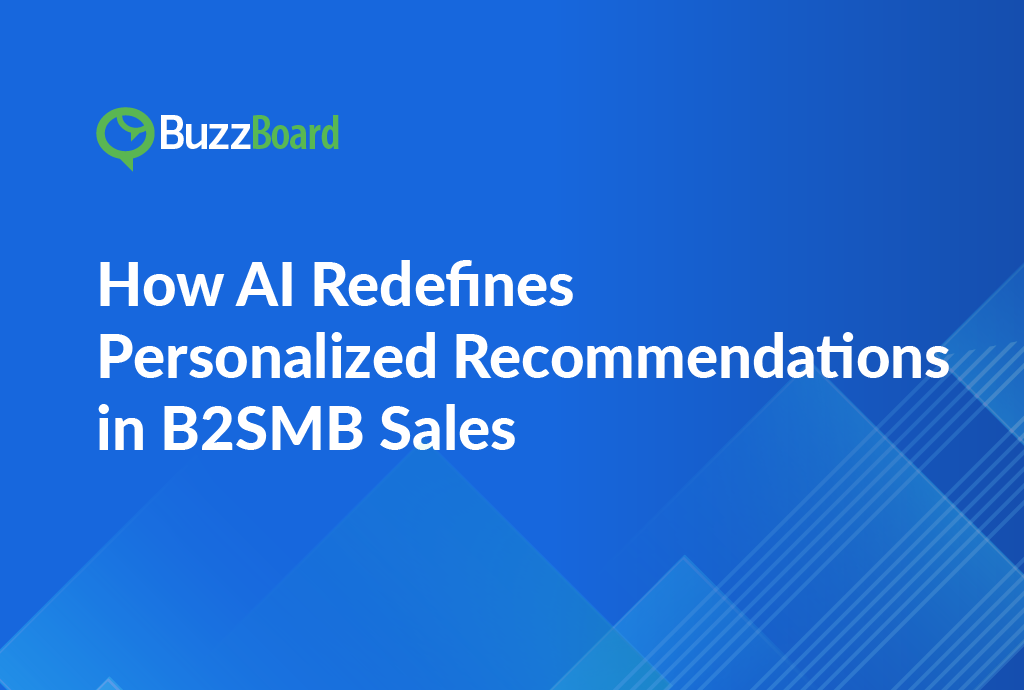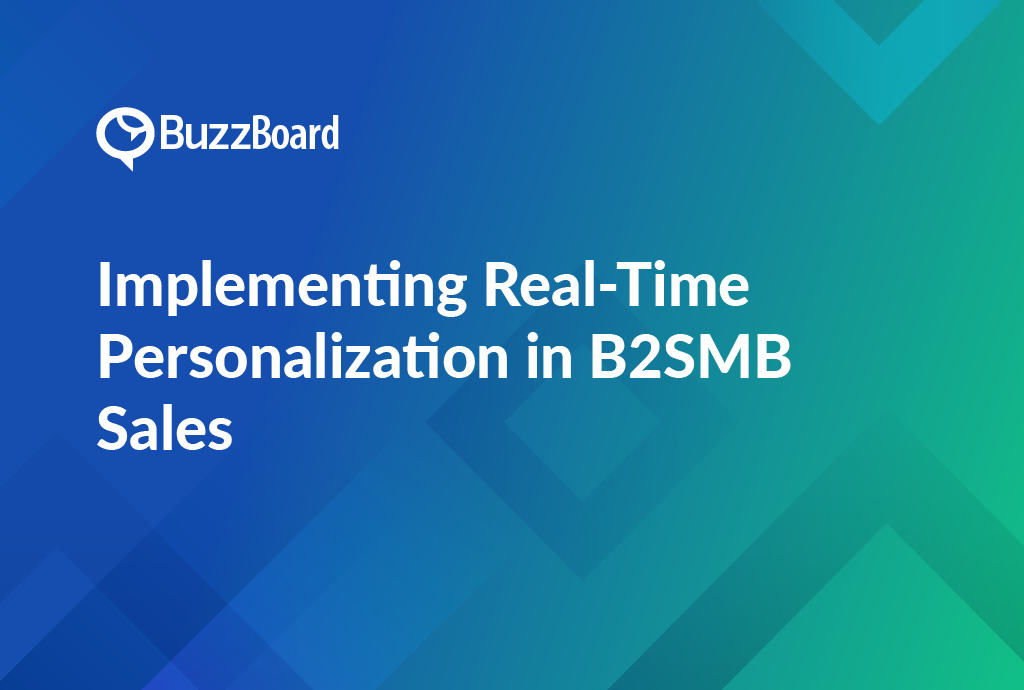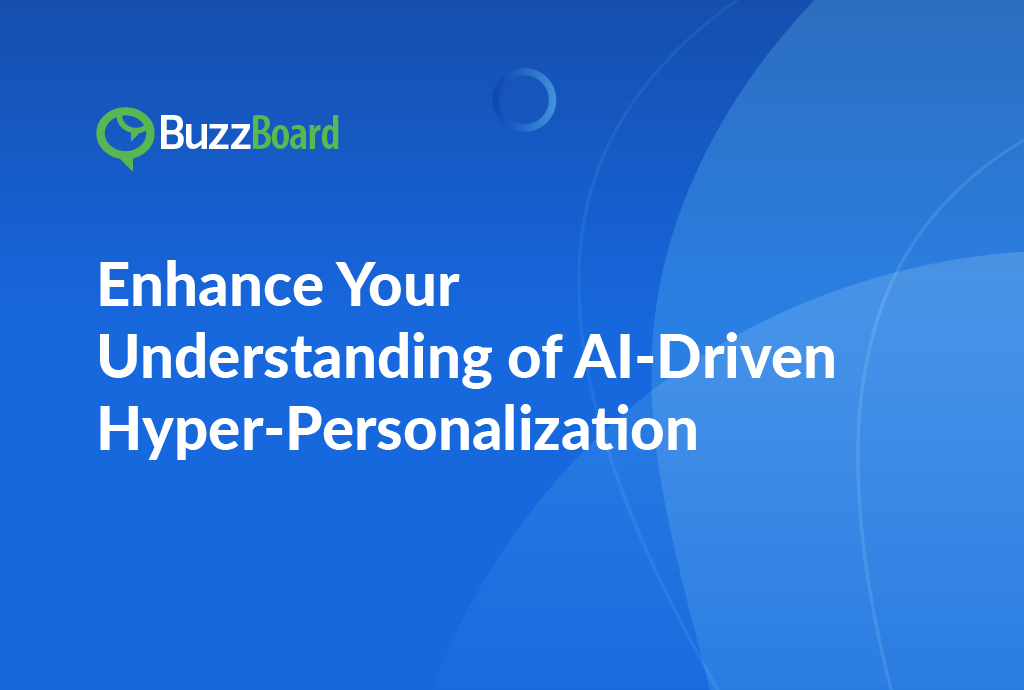Hyper-personalization Gaining in Sales and Marketing
Hyper-personalization in marketing and sales has gained popularity, but it’s not without its limitations. Despite its potential to increase customer engagement and conversion rates, hyper-personalization can be limited by data quality issues, lack of customer consent, and the complexity of integrating multiple data sources. Additionally, it can be challenging to balance personalization with privacy concerns and regulatory compliance. To overcome these limitations, marketers and sales teams must prioritize data quality, customer consent, and transparency in their hyper-personalization strategies
Hyper-personalization as a Powerful Tool for Selling to Small and Local Business
Lately, hyper-personalization has emerged as a powerful tool for salespeople targeting small and local businesses. While this innovative approach holds immense potential, the application of this approach in targeting small, local businesses comes with inherent limitations. Therefore, it’s become crucial for marketing and sales professionals to adjust between personalized outreach and taking exceptional steps that might be counterproductive. This introduction sets the stage for a deeper exploration of the considerations and limitations associated with hyper-personalization in the context of targeting small businesses and providing insights to help salespeople navigate this landscape more effectively.
Unpacking Hyper-Personalization
Understanding the Essence of Hyper-Personalization
Hyper-personalization in digital marketing involves tailoring content and messages to individual users based on their preferences, behaviors, and demographics. It aims at creating a more personalized and engaging experience, ultimately driving customer satisfaction and loyalty.
The Positive Impact of Hyper-Personalization
Before delving into its limitations, let’s acknowledge the positive impact of hyper-personalization:
Increased Conversion Rates: Tailoring outreach messages to the specific needs and interests of each customer significantly boosts conversion rates. By delivering content that aligns with the customer’s journey and preferences, salespeople can increase the likelihood of converting leads into loyal customers.
Better Customer Engagement: Hyper-personalization allows salespeople to understand customer preferences, behavior, and purchase history by leveraging data analytics, machine learning, and Generative AI. These deep insights enable them to craft personalized campaigns that engage customers on a personal level, fostering a stronger connection between the buyers and the sellers.
Enhanced Customer Retention: When individuals feel that a brand understands and values their unique needs, they are more likely to become repeat customers. This not only contributes to revenue growth but also fosters brand loyalty, a priceless asset in the world of small and local business marketing.
Exploring the Limitations
1. Data Privacy Concerns
Hyper-personalization heavily relies on data collection, raising concerns about user privacy. With increasing regulations and consumer awareness, salespeople must navigate this challenge cautiously. Solutions involve transparent data usage policies and ensuring compliance with privacy regulations.
2. Resource Intensiveness
Implementing hyper-personalization demands significant resources, including advanced tools and technologies. For small and local businesses with limited budgets, this can pose a challenge. Sales professionals must assess the feasibility and scalability of hyper-personalization for their clients.
3. Risk of Over-Personalization
While customization is key, there’s a fine line between personalization and over-personalization. Bombarding users with highly specific content may lead to irritation and disengagement. Striking the right balance requires continuous monitoring and adjustment.
4. Maintenance Challenges
Hyper-personalization is not a one-time effort; it requires continuous monitoring and adjustment. Salespeople must stay vigilant to changes in customer behavior, market trends, and the effectiveness of personalized campaigns. Failure to adapt to these changes can result in outdated and ineffective marketing strategies.
5. Limited Content Diversity
Over time, hyper-personalization may inadvertently limit the diversity of content presented to users. This could result in a narrowed perspective for users, missing out on potentially valuable information. Salespeople should emphasize content diversity within their hyper-personalization strategies.
6. Generative AI Complexity
The use of Generative AI to power hyper-personalization introduces a layer of complexity. Understanding and managing these technologies can be challenging, particularly for sales professionals without a technical background. Collaborating with experts or providing training can alleviate this limitation.
Navigating the Challenges
1. Striking a Balance
Sales professionals must strike a balance between personalization and privacy. Transparently communicate data usage policies, obtain explicit consent, and prioritize user trust. Utilize data responsibly to enhance, not compromise, the user experience.
2. Efficient Resource Allocation
For businesses with budget constraints, strategic resource allocation is crucial. Prioritize hyper-personalization efforts based on their potential impact and scalability. Leverage cost-effective tools without compromising quality.
3. Continuous Observation and Fine-Tuning
To mitigate the risk of over-personalization, implement robust monitoring systems. Regularly analyze user engagement metrics and adjust personalization strategies accordingly. Solicit feedback from users to ensure their preferences are respected.
4. Expanding Content Approaches
Combatting the limitation of limited content diversity involves implementing content strategies that prioritize variety. Ensure that hyper-personalization efforts encompass a broad range of content to provide users with a holistic experience.
5. Facilitating Understanding of Generative AI
Sales professionals should invest in understanding generative AI technologies or collaborate with experts to bridge the knowledge gap. Training programs or partnerships with tech-savvy individuals can empower sales teams to navigate the complexities effectively.
A Positive Outlook
While hyper-personalization presents a complex landscape of challenges, it remains an invaluable asset in the sales and marketing arsenal. When approached strategically, with a deep understanding of its limitations and nuances, sales professionals can harness the power of hyper-personalization to forge meaningful connections with their target audience. By recognizing the potential of hyper-personalization, businesses can leverage its benefits to drive engagement, conversion rates, and customer loyalty.
However, it is crucial to acknowledge the limitations of hyper-personalization and adapt a nuanced approach that takes into account the unique characteristics of small enterprises. These organizations, in particular, require a tailored strategy that balances the benefits of hyper-personalization with the constraints of their resources and scale. By doing so, sellers and marketers can refine their strategies to ensure that hyper-personalization adds genuine value without overwhelming the unique dynamics of smaller enterprises.
In reality, hyper-personalization is not a one-size-fits-all solution. Rather, it requires a thoughtful and adaptive approach that considers the distinct needs, preferences, and pain points of each customer. By adopting a customer-centric mindset and leveraging data-driven insights, businesses can create personalized experiences that resonate with their target audience and drive long-term growth.
Ultimately, the key to unlocking the full potential of hyper-personalization lies in striking a delicate balance between the benefits of personalization and the limitations of implementation. By acknowledging the challenges and adapting a strategic approach, businesses can harness the power of hyper-personalization to build stronger relationships, drive customer loyalty, and achieve their sales and marketing goals.
Once marketers and salespeople learn to harness the positive aspects of hyper-personalization, minimizing its potential drawbacks, this approach can reign as a driving force in the success of sales and marketing efforts targeted at small and local businesses.










